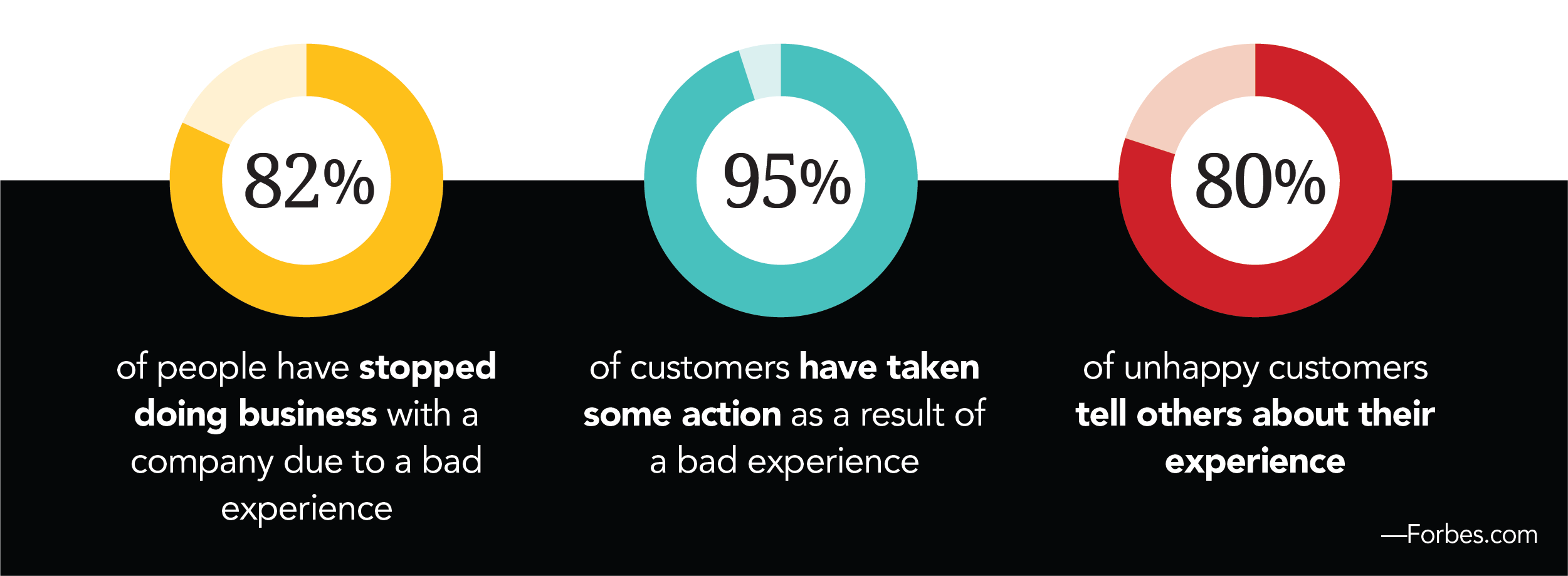
Twenty-five years ago, the world was introduced to the internet, and the Information Age emerged; but just as quickly as it manifested, it has come to an end. While everyone is still rapidly consuming and accessing information, the way they choose to consume information has shifted. Enter the Experience Age.
You already know that your customers have decreased attention spans and increased expectations – they’re no longer ignorant to the ins and outs of business. Consumers know that every site is trying to sell them something . . . but they don’t want to be “sold at,” and they want more than just the function of a product or service. They want to connect on an emotional level. They want to be entertained. They want a positive experience.
And with 82% of people having stopped doing business with a company due to a bad experience,1 you have to get it right. You can’t afford not to. So, are you ready?
Here are five tips that will help your communications function get there:
1. REMEMBER THE WHY. Every organization knows what they do, but very few can articulate why they do it. In the experience age, the “why” is the story that both loyal customers and new fans want to hear. This humanizes brands and makes the “what” more relatable. Communications must create these types of powerful stories and reinforce them in interactive and engaging ways. When doing this, keep in mind that the consumer is king (or queen!) – without them, your business wouldn’t exist. They’ll applaud you for keeping their interests and needs at the forefront.
2. LISTEN TO YOUR CUSTOMERS: Predictive analytics gives you an opportunity to forecast future customer behavior. For example, Alder Hey Children’s Hospital is the UK’s first ‘cognitive hospital.’ Alder Hey has employed IBM Watson to apply AI to previously unstructured data in order to anticipate and respond to questions from patients and families. This is done before patients even arrive at the hospital through child-friendly avatars. The data covers topics ranging from where to park, which films the children enjoy and how they want their rooms to look. Through Watson’s AI capabilities, the hospital is able to predict the needs, emotions and preferences of the patient and plan their experience accordingly. This provides a personalized experience to the patient, demonstrating they are being heard, cared for and valued.
3. BE AUTHENTIC AND CLEAR: Authenticity in your communications is crucial. This can’t be stated enough. It’s vital not only in your storytelling, but in every part of the customer experience. And unfortunately, authenticity is something consumers feel brands are lacking. To avoid that pitfall, communicators need to ensure that their messaging is transparent, genuine and in line with “why” the company exists. Genuine messaging does not go far enough though – to protect and advance the brand character, communicators must also demonstrate integrity behind their words. Of course, most brands will face some sort of communication crisis – they’re unavoidable and unpredictable. Make sure your messaging remains consistent and clear, and be sure to use data and predictive analytics. Communicators can try and get ahead of issues by owning the narrative from the start.
4. BE ‘ALWAYS ON’ AND ACT FAST: Communication functions must build a culture that drives agile and decisive behavior. After the corporate narrative is crystallized from the top, it should be vetted and evaluated through real-time feedback and market research. Global alignment and response that can follow the sun 24/7 is ever more important in the experience age. And speed is a critical in seizing valuable opportunities to own the conversation
5. INTEGRATE AND COLLABORATE: Having all of the expertise within a communications function isn’t enough. The ability to integrate and dovetail with other functions, especially business units, HR and Marketing, is crucial. For example, GE’s campaign, What’s the Matter with Owen?, did a great job of connecting the audience to a person-to-person story that showed Owen’s experience and journey as a prospective employee. And it was all made possible through close collaboration between Comms, HR and Marketing. This is the most challenging part. The customer experience depends on how well all parts of the business are working together. Everything is easier and more efficient when information is shared in real-time, directly with the people who need it.
In a world where everyone is a storyteller, your brand’s messaging needs to stand out and provide customers with an experience and a connection they will never forget. Come back next week, when we’ll share tips on how to be more innovative with those messages.
1 Bill Hobbib, “The Customer Experience Imperative,” Forbes / Oracle